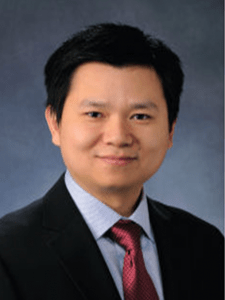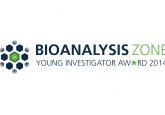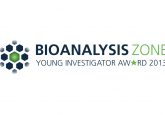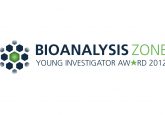2013 Young Investigator Award Nominee: Yong Zeng
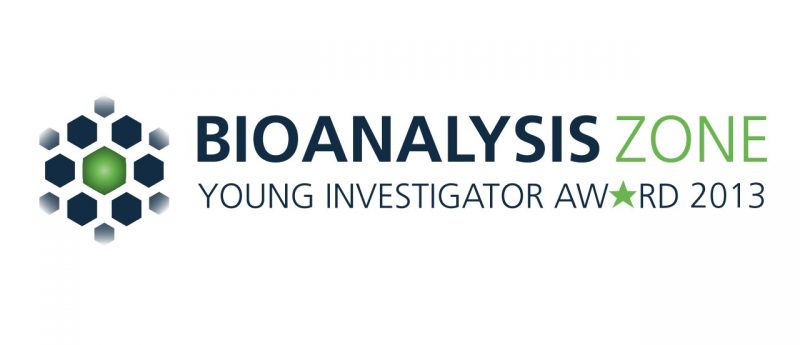
Nominee:
Nominated By:
Supporting Comments:
What drove you to choose a career in bioanalysis?
I developed a passion for bioanalysis, particularly bioanalytical applications of lab-on-a-chip (LOC), during my master’s research on microchip capillary electrophoresis system for monitoring neurotransmitter exocytosis. I really enjoyed working in this field because it is truly interdisciplinary in nature and provides me a unique environment to learn physical sciences, engineering, and biology. I was lucky to have an opportunity to pursue my PhD studies with Jed Harrison, a pioneer in LOC and chip-based proteomics. This remarkable experience broadened my perspective on the future evolution of bioanalysis and triggered my interest in pursuing an academic career committed to bioanalytical research.
Describe the main highlights of your bioanalytical research, and its importance to the bioanalytical community both now and in the future.
My PhD research was focused on developing microfluidic approaches to control colloidal self-assembly to fabricate ordered porous nanostructures. This work led to the first demonstration of self-assembled nanosieves for efficient and fast bioseparations. In contrast to conventional nanolithography, the self-assembly method features ease of fabrication, low cost, and ability of large-scale patterning of 3D nanostructures. Precise control of local fluid dynamics enabled by the microfluidic strategy affords a conceptually new route to create a whole new class of nanostructures inaccessible for conventional bulk scale self-assembly means. These unique nanostructures provide well-defined confinement to elucidate dynamics and transport of biomolecules, opening new opportunities for developing novel separation mechanisms. During my postdoctoral research, I developed a microfluidic single-cell genetic analysis technology and demonstrated its feasibility for preclinical detection of leukemia. Early-stage cancer is challenging to study partially because most current methods lack the ability to examine low-frequency mutant cells and thus require ensemble measurement of a large cell population which can mask important information of cellular individuality. Single-cell genetic analysis provides a high-throughput platform for quantitative detection and single molecule sequencing of mutations at extremely low frequency. Such capability is important for elucidating underlying mechanisms of carcinogenesis and discovery of biomarkers of early effect. This technology can be adapted to other single-cell biochemical measurements of cell behaviors such as cellular response to drugs.
Describe the most difficult challenge you have encountered in the laboratory and how you overcame it?
When I started my graduate research, I was initially assigned to fabricate nanostructures using electron-beam lithography to investigate bioseparations. Soon I realized this technique was extremely slow and expensive for patterning large-area nanostructures with the dimensions of small biomolecules. The equipment broke down one day and it was estimated to take at least 3 months to repair it. Instead of waiting, I thought about developing alternative approaches and came across a technique termed colloidal self-assembly CSA for fabricating 3D-ordered porous lattices. This approach had been widely used in photonics, but no literature was found on investigating colloidal self-assembly for bioseparations. Despite the risks of working on a completely new idea, I took the initiative to start a project to obtain preliminary results. I solved many technical challenges encountered, such as instability of colloidal lattices under the high electric fields during separation. After a few months of hard working, I successfully developed a new nanosieve system that achieved the desired size separation with easy and inexpensive nanofabrication. Eventually, my advisor was impressed by the results and gave me the chance to propose and conduct all my thesis research projects independently.
Where do you see your career in bioanalysis taking you?
Rigorous training at two research groups renowned for outstanding bioanalytical research has prepared me for pursuing a successful academic career in this area. One of my current research focuses is to develop high-throughput microfluidics for massively parallel, quantitative single cell analysis of tumor cells by seamlessly integrating single-cell capture and sensitive molecular assays. This research aims to yield transformative tools to facilitate cancer biology, pre-symptomatic diagnosis, and monitoring of disease relapse. I am also exploiting microfluidic principles to develop next-generation glycomic technologies. Despite the potential of protein glycosylation for cancer diagnosis and prognosis,progress in glycomics has largely lagged behind proteomics due to the complexity of glycome and dynamic glycan alteration in patients. Our approach represents a paradigm shift from conventional bench-top methods to develop an automated microfluidic lectin array platform that enables sensitive and quantitative glycomic profiling of minute patient blood samples. This new tool would substantially aid in obtaining integrative and dynamic overview of cancer development and developing novel glyco-biomarkers. To translate bioanalytical innovations into practical solutions to biomedical challenges, I envision my long-term career path involving active collaborations with investigators from University of Kansas Medical Center and other institutes.
How do you envisage the field of bioanalysis evolving in the future?
Deciphering biological complexity creates a pressing need of improved or revolutionary new tools for bioanalysis at all levels-from molecular to cellular, organisms, and ecological systems. For instance, systems understanding of complex interaction networks in a cell demands bioanalytical tools with significant improvement not only in sensitivity, specificity and spatiotemporal resolution, but also in the ability to conduct multiparameter measurements in a high-throughput manner. I envision merging technical innovation with biological research will play an increasingly important role in the future evolution of bioanalysis to address the urgent need of new bioanalytical capabilities. To this end, cross-disciplinary collaboration is an effective approach to accelerating technology development and to exploring creative applications to tackle long-standing biological, pharmaceutical and clinical problems. Fostering the next generation investigators capable to develop and apply new analytical tools in biology has profound impact on the future development of bioanalysis. It is important to implement a more interdisciplinary undergraduate education to lower ‘language barriers’ between disciplines. Leading-edge progress in physical and life sciences may be incorporated into undergraduate curriculums to broaden students’ knowledge base and stimulate their enthusiasm. Creating engaging undergraduate research programs is invaluable to educating future bioanalytical scientists.
Please list 5 of your recent publications, and select one that best highlights your career to date in the field of bioanalysis.
Zeng Y, Novak R, Shuga J, Smith MT, Mathies RA. High-performance single cell genetic analysis using microfluidic emulsion generator arrays. Anal. Chem. 82, 3183–3190 (2010).
- Selected as the cover paper;
- Featured in the News Focus: The power of one. Science 331, 24–26 (2011).
- Featured in the Technology Feature: Clever PCR: more genotyping, smaller volumes. Nature Methods 7, 351–355 (2010);
- Featured by the News: Detecting extremely rare mutants with single-cell PCR technology. BioTechniques, April 27 2010.
Zeng Y, Harrison DJ. Self-assembled colloidal arrays as three-dimensional nanofluidic sieves for separation of biomolecules on microchips. Anal. Chem. 79, 2289-2295 (2010).
- Featured by a research profile: Nanofluidic Sieves Ease Separation Anxiety. Anal. Chem. 79, 2611 (2007)
Zeng Y, He M, Harrison DJ. Microfluidic self-patterning of large-scale crystalline nanoarrays for high-throughput continuous DNA fractionation. Angew. Chem. Int. Ed. 47, 6388–6391 (2008).
Novak R, Zeng Y, Shuga J, Venugopalan G, Fletcher D, Zhang L, Smith MT, Mathies RA. Single cell multiplex gene detection and sequencing using microfluidically generated agarose emulsions. Angew. Chem. Int. Ed. 50, 390–395 (2011).
- Selected as a “Hot Paper” by the editors.
- Featured as the front piece of the issue.
Zeng Y, Shin M, Wang M. Programmable active microfluidic droplet generation enabled by integrated pneumatic micropumps. Lab on a Chip 13, 267–273 (2013).
First choice: Zeng Y, Novak R, Shuga J, Smith MT, Mathies RA. High-performance single cell genetic analysis using microfluidic emulsion generator arrays. Anal. Chem. 82, 3183–3190 (2010).
Reasoning: This representative paper clearly demonstrates my capability to move into a new research area and make landmark contribution as exemplified by the extensive interests and recognition of distinction shown above. This work stimulated my strong interest in single cell analysis-a frontier research that bridges analytical science with biology. Along with other papers that I published, it is an exciting part of my postdoc experience that solidified my desire to pursue a career in bioanalysis

